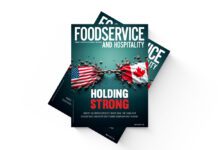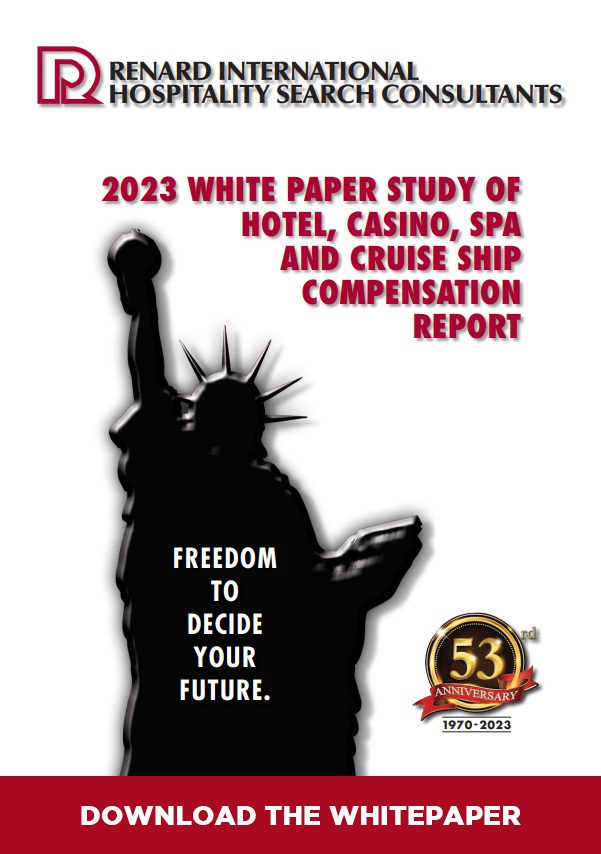By Laura Pratt
Todd Perrin’s been in the restaurant business almost 30 years. One of Newfoundland’s most celebrated chefs, Perrin headed up Mallard Cottage, a St. John’s charmer that is ranked number 22 on the 2024 list of Canada’s Best Restaurants, from its inception until his departure last October. Perrin, who was ranked in the top eight of Top Chef Canada in 2011, worked at The Lodge at Kananaskis in Alberta before opening Two Chefs in 2001, a fine-dining eatery in St. John’s that, in its first year, was listed as one of the country’s Top 50 New Restaurants in EnRoute. In 2008, he opened The Chef’s Inn, a B&B in downtown St. John’s, and then Mallard, a 65-seat dining room, in 2013, lauded for such locally inspired dishes as cornmeal-dusted deep-fried cod cheeks.
Today, Perrin has just opened Rabble, a casual, upbeat newcomer to St. John’s cozy restaurant scene, and, while as enthused as ever about transforming local fixings into virtuosic dishes, the big-time chef is anxious. The restaurant business in Atlantic Canada, he says, is “volatile” right now. Where he’s used to certain business patterns in an industry that’s not reliable at the best times, he’s finding the current imperative to “bob and weave” frustrating, especially among such other challenges as debt, cost-of-living hikes, and inflation, to say nothing of the post-COVID devastation. “Whatever predictability there used to be in the business is out the window,” he says.
It’s a story that could be repeated across the country — and is — but the particular flavour lent to it by the Maritimes, where a couple of bad-weather planes not landing at the airport could ruin a restaurant’s month, makes it particularly hard to swallow. “You can no longer count on having a full house every Friday night,” Perrin says. “And people’s ability to spend is all over the map. People don’t eat like they used to and juggling expanding costs on one end and retracting revenue on the other is a balance all [Atlantic Canada restaurateurs] are struggling with right now.”
Bad economics
The struggle, he believes, is a product of consumers’ changing relationships with dining out. Food prices are up, our taste for the lucrative addition of alcohol with our meals is down, and we aren’t going out as often, reserving the habit for special occasions. “Overall, we’re seeing restaurant patronage — and the general spend — slowing.”
Indeed, agrees Mike Babineau, who’s also been in the restaurant business almost 30 years and considers the current stretch “one of the biggest all-around tough times.”
The COVID experience, which, he believes, taught people to eat at home, either cooking or ordering from apps, “was tough enough,” says Babineau, who owns six restaurants in Fredericton, including five established independent joints and a Cora franchise. “But then we were hit with inflation and increases in costs, and we had to increase our menu prices.”
Inflation is a huge challenge in Nova Scotia, Natasha Chestnut, executive director of the Restaurant Association of Nova Scotia, says, and expenses in her province — for food, insurance, equipment, fuel, utilities, et cetera — are up 30 per cent since before the pandemic.
“We absolutely are seeing people come to restaurants less and the spend per visitor is down,” Kris Barnier, vice-president of Central Canada with Restaurants Canada, told CTV this summer. No wonder Restaurant Canada’s latest survey discovered that 47 per cent of restaurants in Canada are losing money (in 2019, that was 12 per cent).
“There was a good rebound after the industry re-opened post-COVID,” says Richard Alexander, executive vice-president for Government
Relations and Public Affairs at Restaurants Canada, “but it was before the inflationary pressures started creeping in.” Restaurant sales in Atlantic Canada have dropped month after month in the last long stretch, he says, from a six per cent drop in January 2024 to a three per cent drop in June 2024. Costs, meanwhile, have spiked. Since the third quarter of 2022, food costs have gone up 25 per cent, insurance 24 per cent, utilities 20 per cent, and labour 18 per cent. And profit margins are contracting. The average profit margin for Nova Scotia restaurants is just under four per cent now, and about half of restaurants in Atlantic Canada are either breaking even or operating at a loss.
Value meal fix
Because of affordability challenges, guests in restaurants are looking for value, speed, and convenience. “There’s a psychological barrier,” says Alexander. “When someone orders a sandwich, once the price of that sandwich reaches a certain level, they’ll stop ordering a side with it, stop ordering a drink with it, then start taking their lunch from home.”
This explains the explosion of dollar coffees, tasting menus, cooking classes, meal kits, and value meals that quick-service restaurants (QSRs) are using to draw traffic into their stores. Givex Canada, which works with companies to engage customers, told CTV in September that there’s currently a value-meal war taking place with burger chains, sub shops, and taco restaurants.
And loyalty programs, Alexander says, are becoming popular in restaurants, with nearly six out of 10 Canadians signed up for some kind of restaurant loyalty program.
Other trends
Vince Sgabellone, foodservice industry analyst for Circana, says the restaurant industry is growing in Atlantic Canada — just at a slower pace than everywhere else. That, he says, is because of a range of factors, including that the Atlantic region has the oldest demographic of restaurant goers. What’s more, he says, citing data from his CREST database, for the year-ending July 2024, the east boasts the highest concentration of QSRs of any region — just over 70 per cent of restaurant visits are to QSRs here (versus about two thirds nationally).
The Atlantic Canadian consumer favours morning meal visits — clocking in at 35 per cent of total restaurant visits, five points higher than national average, and higher than any other region. And older generations drink a higher proportion of brewed coffee than specialty coffee, a stat that tucks into the rest, given how QSRs tend to skew to morning occasions.
While Atlantic Canadians still dine out (once a week for about 45 per cent of them), they’ve changed their habits. They’re ordering more for off-premise consumption and largely eschewing lunchtime visits because so many still work from home. About two thirds of all restaurant occasions are off-premise in Atlantic Canada, versus about 60 per cent for the national average.
Strangely, delivery is under-developed in this region (three per cent versus the five per cent national average). Sgabellone speculates that this is because providers aren’t bothering, given the low, dispersed population of this part of the country. Finally, following on the popularity of quick-service and the morning meal, it follows that the average spend per person per visit is lower in Atlantic Canada.
Another spinoff of this reality is that, because QSRs tend to be dominated by the large chains, and because the large chains have their fattest share in Atlantic Canada, in aggregate, they control more than half of restaurant visits in this part of the country. With one third of restaurant visits taking place at breakfast here, and QSR dominating the breakfast meal, which boasts the lowest price point, it all goes hand in hand.
Not surprisingly, given that the average spend is so low, one of the challenges for Atlantic-Canadian restaurants is profitability. “Restaurants everywhere have been faced with a lot of costing challenges, so in Atlantic Canada, where the average consumer is less inclined to spend, that’s a bigger problem,” says Sgabellone. That’s particularly so for an independent looking to break through the clutter and get a piece of these consumers’ discretionary purses. “How are you going to convince them to come into your pub or fine-dining restaurant when they’re more inclined to go out to a quick-service restaurant for a morning coffee?”
The Atlantic Canada Challenge
Atlantic Canada represents just seven per cent of restaurant visits in Canada. Foodservice sales are about $4.4 billion and approximately 72,800 people work in the 5,400 restaurants in Atlantic Canada — about six per cent of the region’s total employment, including almost 30,000 youth. It’s a small market — 2.4 million people, or about six per cent of the Canadian population, but it’s not just the market size that distinguishes this part of the country’s restaurant scene. Seasonality is perhaps a more significant influencer here than anywhere else. Weather and tourism, says Chestnut, “are the two biggest components of our industry.” That means a high percentage of restaurants’ business here is conducted over about four months. Clever restaurateurs, she says, operate with this in mind, planning for contractions and growth.
“We’ve always depended on our summers to get through the winter,” says Babineau. “But I didn’t see the volume come through this year and our tourism is critical.”
St. John’s, too, says Perrin, is a small market driven by tourists, and his restaurant’s sales from August to September 2024 dropped by 30 per cent overnight.
Higher expenses are another serious differentiator for this part of the country. Generally speaking, says Alexander, “things are more expensive in Atlantic Canada,” including food and transportation and, he underscores, alcohol, which makes up a high proportion of meals and so can be lucrative.
Restaurants Canada has been pushing government to sidestep any more increases in taxes with a letter-writing campaign asking MPs to lower insurance premiums — ideally back to the rate that was frozen during the pandemic, which would put $1.7 billion back into the pockets of Canadians.
Another big challenge for Eastern Canada is the higher proportion of rural communities, making the labour issue acute — particularly finding cooks.
The upside
The Atlantic-Canada upside, Sgabellone adds, is that it’s less expensive for Eastern-Canadian operators because the off-premise model is cheaper. And while there’s lots of competition for QSR operators, there’s also lots of demand. “So, if you’re looking for a place to try out a breakfast idea, you’ve got a good chance in Atlantic Canada,” he says. “And if you’re a delivery operation, maybe there’s an opportunity there because there’s a white space you can fill. And if you want to operate a full-service restaurant, there’s not as much competition, and maybe people are craving full-service restaurants.” Indeed, the growth of full-service units in Atlantic Canada outpaced other regions in 2023, at three per cent versus flat nationally.
Overall, real estate, rent, and the cost of your premises are probably lower in this part of the country than elsewhere, says Babineau. “It’s not cheap, but relative to Toronto, Vancouver, Montreal, it’s much more economical to run a restaurant here.”
Looking forward
Restaurant Canada’s chief economist, says Alexander, believes Atlantic Canada will start to see some recovery at the end of this year, as the interest rates come down, and then more into 2025. “It’s going to be difficult for a while,” he adds.
“I do see things turning around soon,” says Babineau, who reminds that cycles are part of life in the restaurant business. “If we see the interest rate and inflation drop a bit, we’ll see things flatten out and will hopefully be in a growth pattern. I think it’ll be another year or so before we see a really good turn.” Besides, he adds, it’s not like the industry in Atlantic Canada is in the hole 30 or 40 per cent — “maybe 10 or 15 per cent. It’s just that it’s not as predictable as it used to be, where you knew month by month how things were going to go. Now it’s surprising and you have to adapt quicker.”
It’s why, he contends, restaurants are going to “get more creative” with their offerings and will probably reduce the size of their menus to make things more affordable.
He also predicts that technology will increase its role in restaurant operations, with rising wages offset by labour-reducing tech. He thinks the bigger franchises will outperform independents because of the marketing and general support that prop them up, and he predicts that restaurants will reduce their square footage because the smaller ones are, simply, “so much easier to operate.”
“I’m hopeful about the future,” says Chestnut. “I don’t think the industry is going anywhere.” She points to two recent wins in her neck of the woods: Canadian bartender Keegan McGregor winning World Class Global Bartender of the Year for 2024 and Olivia Sewell, a graduate of Nova Scotia Community College’s culinary-management program, competing at the WorldSkills Competition in France, the first Nova Scotian to represent Canada in this contest. “We have some world-class talent here.”
In the meantime, says Perrin, the Eastern Canadian branch of the restaurant industry is probably into “an extended period of volatility, trying to find out where it’ll land and what its staffing model should be. The bobbing and weaving have always been part of the industry but it’s more profound now because we’ve been pushed to the limits with COVID and debt. You’re a bad couple of weeks away from really being in trouble.
“But I’m optimistic, obviously — we just opened a new spot. I believe there’s always going to be a place for restaurants. If you do it right, you can make it work. People who are going to be successful going forward are going to be those with a lot of experience — who’ve been through the challenges and come out the other side.”


















